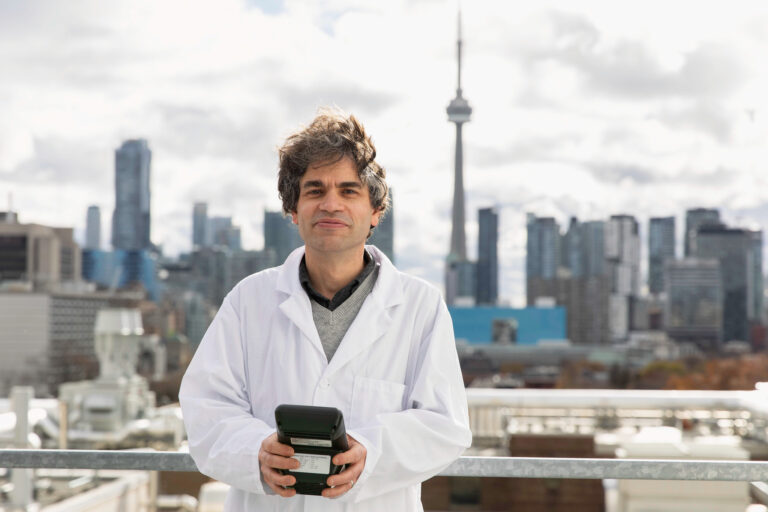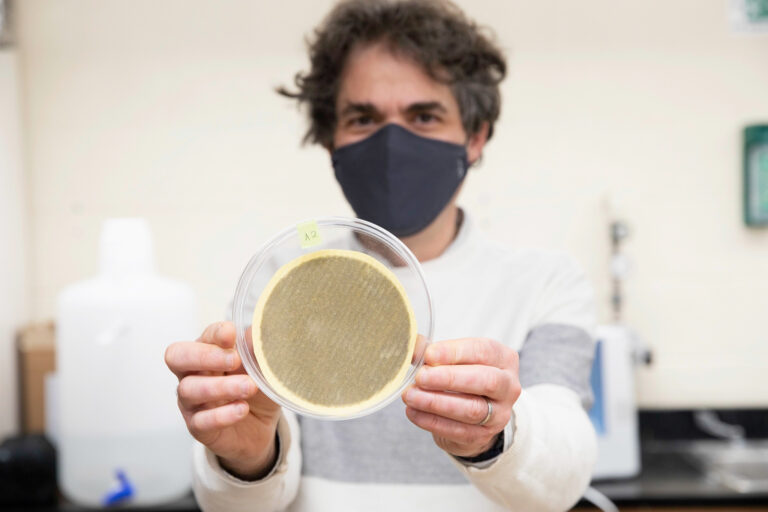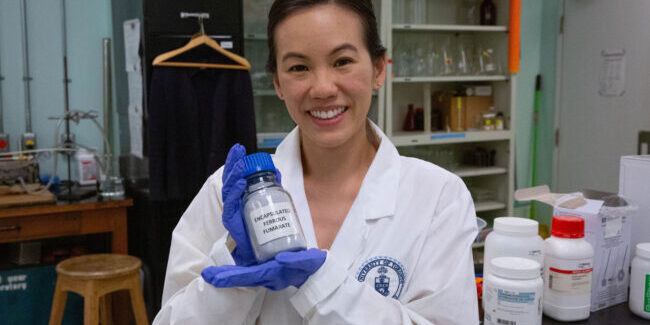As new cases of COVID-19 soar, many jurisdictions across Canada are increasing measures to slow down infections from the highly transmissible Omicron variant. Public health officials are calling for further capacity limits in indoor spaces and imploring people to reduce social contacts over the next several weeks.
Writer Phill Snel spoke with indoor air quality expert Professor Jeffrey Siegel (CivMin), to discuss what we have learned about virus spread and what we might do to mitigate transmission. This interview has been condensed and edited for length and clarity.
Regarding efforts to reduce the virus transmission, can you tell us about what’s worked and what approaches we should continue?
We have learned a lot about taking precautions, and we’ve learned a lot about this specific disease. I think one piece that’s been really interesting is, if you look back to the Q&A from March, there’s not a lot that I would change.
What was brought to light was the way we approach infectious disease; it’s very much from a public health, or from a medical context, yet the transmission is strongly affected by things going on inside our buildings. I hope, being most optimistic, there is now this understanding that it’s also a building science problem.
This is almost entirely an indoor disease. There has been a change in the discourse. I’ve tried to never say “I told you so,” from the beginning of this, but we’ve known for hundreds of years that ventilation is important for the spread of infectious disease. It’s nice to see that recognized.
One thing in particular, this idea of droplets versus aerosols, is a hugely false dichotomy. The boundary used to be five microns — the idea that there is a threshold in particle size where there’s different behaviour is ludicrous. A 4.9-micron particle behaves very similarly to a 5.1-micron particle — there’s no difference there.
What has been most useful to me to understand the transmission of this disease is this idea that there’s nothing magic here. I am aware filtration and ventilation are solving one piece, but not even necessarily a very big piece in some environments.
There really has to be this idea of a multi-layered transmission protection model. A great layer, for example, is vaccines, but there are issues with vaccine hesitancy and vaccine availability. Not to mention, there is clearly breakthrough [infections] going on.
Physical distancing, masks, hand-washing are all great layers, but they all are imperfect. They have holes in them. And so, you put all that together and you want to do the many layers as well as possible, so that there are as few holes as possible.

Here in Canada, it has gotten colder and we are gathering indoors. We are seeing COVID-19 case numbers rise recently. Is there anything we can do to help ourselves?
I’m not a medical or public health professional, so I say this cautiously: I do think the most important thing everyone needs to do is a good assessment of their own risk before any event.
What I don’t want people to take from anything I say is, “Don’t do that.” Instead, evaluate the risk; how important is it to you to attend, for example, a sporting event?
You often don’t have control over things like filtration and ventilation. You don’t even know how to ask about it, and so the only thing I tell people to do is ask what measures are being taken. While you won’t necessarily be able to fully understand the answer, you can assess the level of engagement. To me, that is the most important thing.
Are HEPA filters effective and worthwhile pursuing? Should we think about them in other environments such as office spaces, indoor restaurant dining, or even our own homes?
We have portable filters at home we use whenever there is someone in the house who’s not part of the household. So, absolutely, we should all be using portable filters.
It’s not a bad solution, given that overnight you can make a change, assuming you can find a portable filter (some are impacted by the same supply chain issues affecting many other products).
I’d much rather people have a HEPA filter than not, and the scenarios you mentioned, such as for restaurants I think could very often benefit from it, but I feel like in a lot of cases places would be better served by a more kind of comprehensive solution. So, if HEPA filters are a bridge to that comprehensive solution, great.
Are there any other thoughts you would like to impart or recommendations you would like to make?
The risk we should all think about, no matter in what environment we live, is if someone in our household is exposed to COVID. If someone either gets COVID or is in some sort of high-risk situation, I do think we do have to think about how we can isolate people safely. Is there a bedroom they can go into? Is there a bathroom or a process for using the bathroom that we can minimize the risk? Under ideal scenarios, can we keep the space that they’re in under negative pressure?
The second big picture issue is that we obviously have a health disparity and inequity issue in society, and COVID is a perfect example that obviously has impacted some communities much more than others.
What I would like to think about as a model going forward is: can we start to think about addressing some of those issues by addressing indoor air quality?
As a society, a really good investment we could make would be in looking at how we can improve the quality of indoor air in congregate settings. We’ve just seen such devastation at long-term care homes and such a potential risk in drop-in centres and homeless shelters.
How does the Omicron variant change things?
Short answer is it changes everything and nothing.
Omicron is so transmissible that it will find a way through any holes in the layers of protections and so I would double down on the advice to have lots of layers and do them as well as possible.
It is important to not be alarmist: we are likely in for a tough winter and spring. But we will get through it. As with other waves, our priority should be reducing the risk as much as possible for those in racialized and marginalized communities who have borne the brunt of earlier waves.
It is also important to not be defeatist, the vaccines [with boosters] are an amazing layer. The medical community has developed a variety of treatment options and we know a lot more than we did two years ago. We will get through this and be in a better place.




